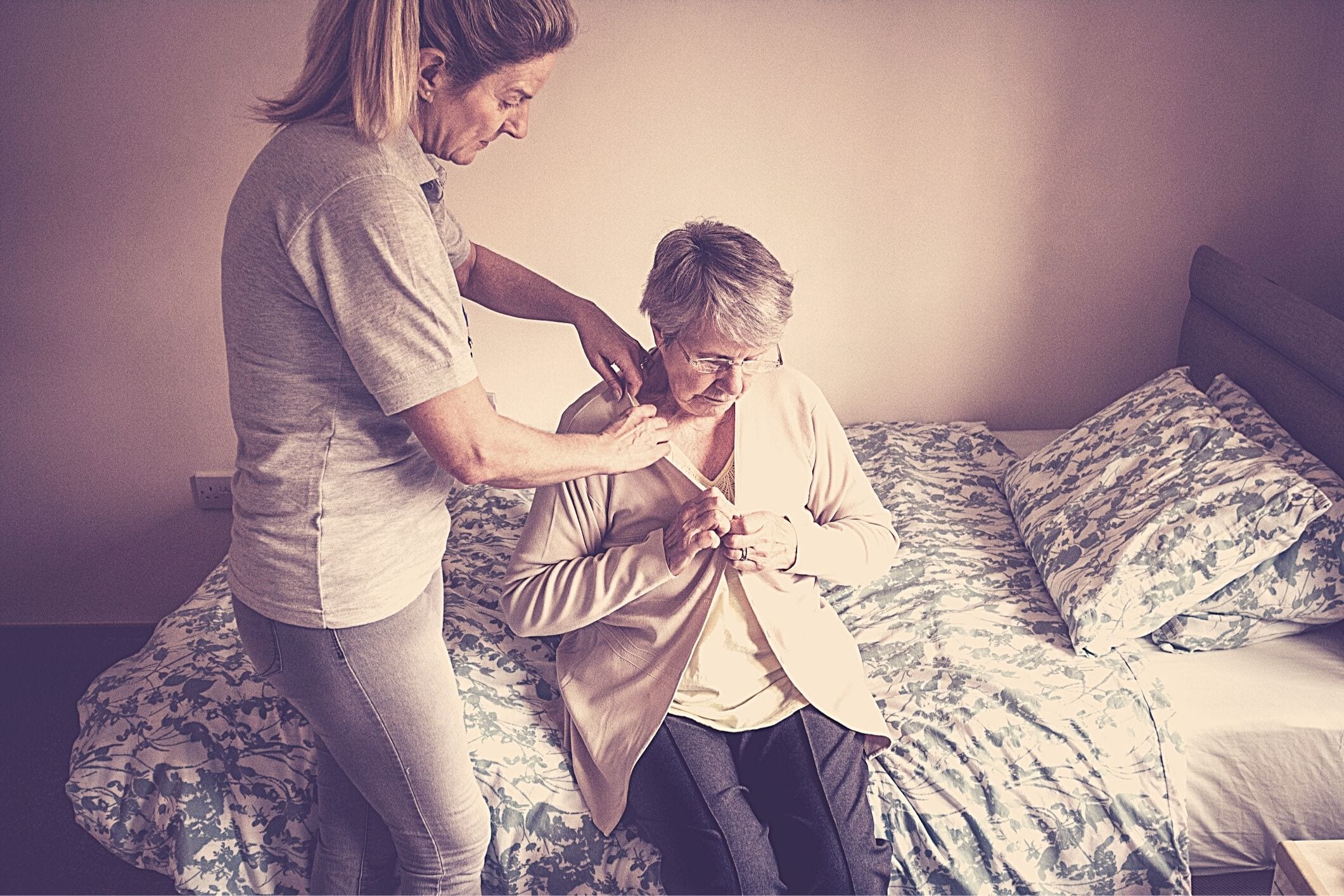
Not surprisingly, when I tell my friends that I am researching nursing homes to find good ideas worth sharing, they cannot imagine my interest. Their first response is: “I’ll never go there.” Yet any one of us could end our days in a care home, whatever our current health or income.
When I tell my friends that I am writing about clothes and laundry in nursing homes, they are even more surprised. But when I say this to anyone who lives in, works in or visits a nursing home, they understand how clothes and laundry are in fact critical to health.
Clothes have a particular significance in the communal setting that is a nursing home, where so many other aspects of identity may be under threat. Clothes are a way to establish individuality, helping residents and their families control how they are perceived by others. Clothes also indicate how much and what kind of work went into their presentation and care.
Our research team has searched in Norway, Sweden, Germany, the United Kingdom, the United States and Canada for ideas worth sharing on how to make nursing homes as good as they can be – for those who live and work in them.
Everywhere, we heard about clothes and laundry.
On admission to a nursing home, residents are often told to bring only three changes of clothes (and we saw closets so small that they could not hold more).
Many homes require that clothes be labelled, machine washable and able to withstand the high temperatures used to destroy germs that may be a threat to seniors. So forget about that cashmere sweater your daughter gave you!
We also witnessed residents in mismatched clothing, in sagging urine-stained pants and with blouses undone.
In some places, this reflected the regulation that requires staff to have everyone up, dressed and at breakfast by 8am. The rush was complicated by staffing numbers too small to deal with both the high needs and significant variation among residents.
But we also observed places where residents were well-dressed in ways that established their identity. A number of practices and structures contributed. The most common was daughters taking their mothers’ clothes home to be cleaned. Decent-sized closets also helped ensure a range of choices.
In Sweden, we studied a home that had a small bench at the entryway, where bulky outdoor clothes were hung. Their presence suggested at least the promise of a walk outside.
The Swedish home also had a small washer/dryer in each resident’s bathroom. When the care worker came to help the resident get up and dressed, she put the clothes in the washing machine and adjusted it for delicate wash when necessary.
Washer/dryers in each room may be out of reach for many homes, but other homes have adjustable machines in each small section of the home, offering more control over clothes and their care compared to commercial laundry services.
The homes where we saw better-dressed residents tended to have lots of staff, like one German home that had 66 nursing staff supplemented by 110 apprentices. Some Norwegian homes had nearly one staff member per resident.
But other strategies can also help. In one Nova Scotia home, the residents can get up when they want and eat in their pyjamas if they wish. This gives workers the time to pay attention to each resident’s dress. Indeed, we observed staff consulting with residents about whether they thought the green sweater matched the blue blouse.
We have other examples of promising practices and these are detailed in an Ideas Worth Sharing series of books and e-books we have produced.
Above all, when designing, managing and choosing nursing homes, we need to pay attention to clothes. This means attending to how residents are helped to dress and how clothes are worn, cleaned and stored. This means attending to workers, families, residents and physical environments.
Pat Armstrong, Distinguished Research Professor of Sociology, York University, Canada
This article is republished from The Conversation under a Creative Commons license. Read the original article.
I think this is essential. Also its essential that families provide clothes. Foortwear that’s appropriate l love that our home irons clothes. Thats rare in homes lve worked at for past 39 years. I love clothes. Id hate to be poorly dressed. Keep up great posts hellocare
Looking at care homes for my mum who has dementia ,she has been in hospital for over 3 months now and just wants to be dressed in her own clothes and not in night clothes as has been the case for so long now in the hospital environment.
Your post raised so many good ideas that I had not taken into account so a huge thank you 🙏🏻 I can now look deeper into what is required to make my mum feel dignity and comfortable